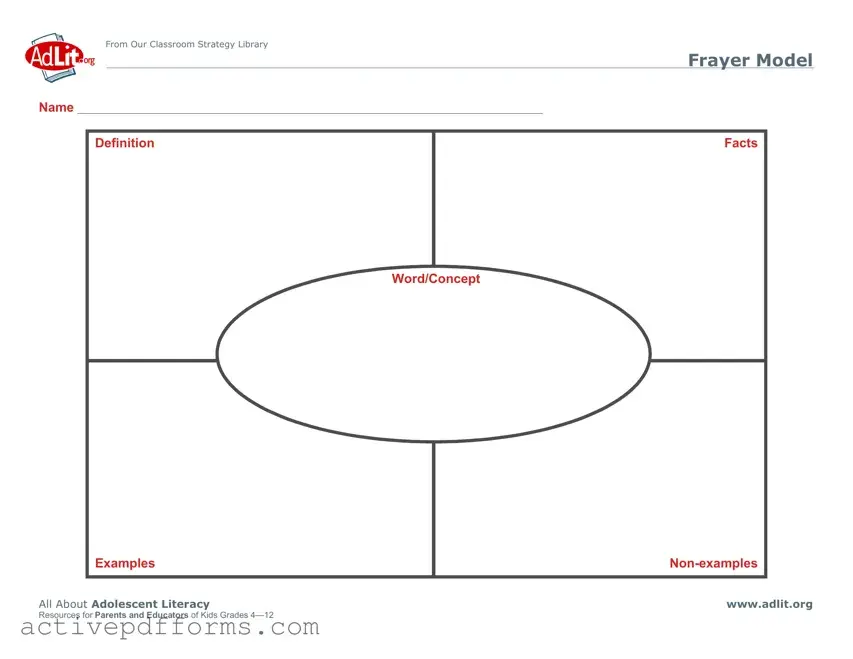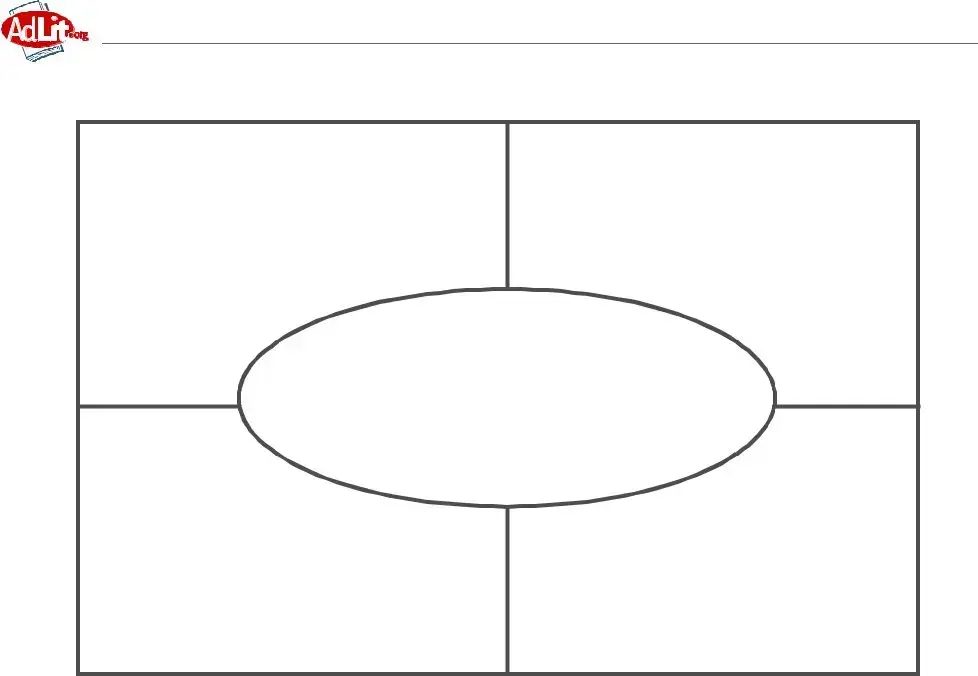Free Frayer Model Editable PDF Template
The Frayer Model Editable form is a strategic educational tool designed to help students deeply understand new concepts through definition, application, and examples. This form, originating from Our Classroom Strategy Library, underscores the importance of connecting words or concepts to students' prior knowledge. Specifically tailored for parents and educators of kids in grades 4—12, it facilitates a comprehensive exploration of adolescent literacy by distinguishing between examples and non-examples of new information.
Edit Frayer Model Editable Now

